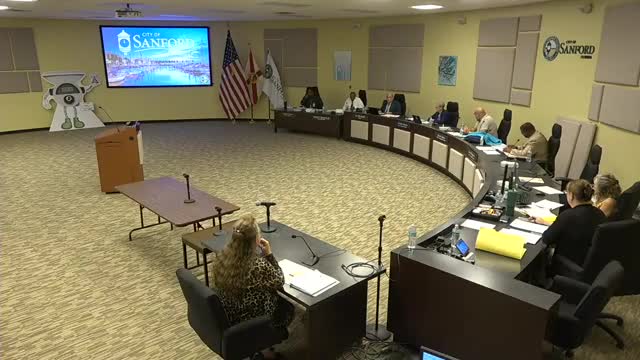City Commission Reviews Proposed Changes to Purchasing Policy and Approval Thresholds
September 22, 2025 | Sanford, Seminole County, Florida
This article was created by AI summarizing key points discussed. AI makes mistakes, so for full details and context, please refer to the video of the full meeting. Please report any errors so we can fix them. Report an error »

During the City of Sanford Work Commission Meeting on September 22, 2025, significant discussions centered around proposed changes to the city’s purchasing policy, which could streamline procurement processes and impact how city funds are managed.
One of the key proposals discussed was an increase in the threshold for requiring multiple quotes for purchases. Currently, purchases over $2,500 require three quotes, but the new policy suggests raising this limit to $5,000 for one quote and $25,000 for three quotes. This change aims to reduce the administrative burden on city staff while maintaining oversight on larger expenditures.
Another notable change proposed was to adjust the City Commission's approval threshold for purchase orders. The current limit is set at $50,000, but the new policy suggests raising this to $75,000. Some commissioners expressed concerns that this increase might not significantly reduce staff workload, as only a handful of purchases exceed this amount annually. However, there was a consensus that raising the limit could still provide some relief.
The discussion also touched on change orders, with a proposal to set a new threshold of $75,000 for change orders on contracts. This would mean that any change order exceeding this amount would require City Commission approval, which could help ensure greater oversight on larger projects.
Additionally, the proposed policy includes new exemptions from competitive bidding for certain services, such as medical services. While some commissioners raised concerns about the implications of selecting the lowest bidder for essential services, the intent behind these exemptions is to align with practices seen in other municipalities.
The commission plans to review the proposed changes further before adopting them at the next meeting. These adjustments to the purchasing policy reflect an ongoing effort to enhance efficiency in city operations while ensuring accountability in the use of public funds. As these discussions progress, residents can expect updates on how these changes may affect city services and expenditures in the future.
One of the key proposals discussed was an increase in the threshold for requiring multiple quotes for purchases. Currently, purchases over $2,500 require three quotes, but the new policy suggests raising this limit to $5,000 for one quote and $25,000 for three quotes. This change aims to reduce the administrative burden on city staff while maintaining oversight on larger expenditures.
Another notable change proposed was to adjust the City Commission's approval threshold for purchase orders. The current limit is set at $50,000, but the new policy suggests raising this to $75,000. Some commissioners expressed concerns that this increase might not significantly reduce staff workload, as only a handful of purchases exceed this amount annually. However, there was a consensus that raising the limit could still provide some relief.
The discussion also touched on change orders, with a proposal to set a new threshold of $75,000 for change orders on contracts. This would mean that any change order exceeding this amount would require City Commission approval, which could help ensure greater oversight on larger projects.
Additionally, the proposed policy includes new exemptions from competitive bidding for certain services, such as medical services. While some commissioners raised concerns about the implications of selecting the lowest bidder for essential services, the intent behind these exemptions is to align with practices seen in other municipalities.
The commission plans to review the proposed changes further before adopting them at the next meeting. These adjustments to the purchasing policy reflect an ongoing effort to enhance efficiency in city operations while ensuring accountability in the use of public funds. As these discussions progress, residents can expect updates on how these changes may affect city services and expenditures in the future.
View full meeting
This article is based on a recent meeting—watch the full video and explore the complete transcript for deeper insights into the discussion.
View full meeting